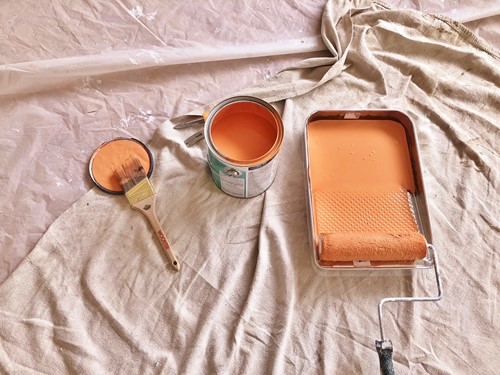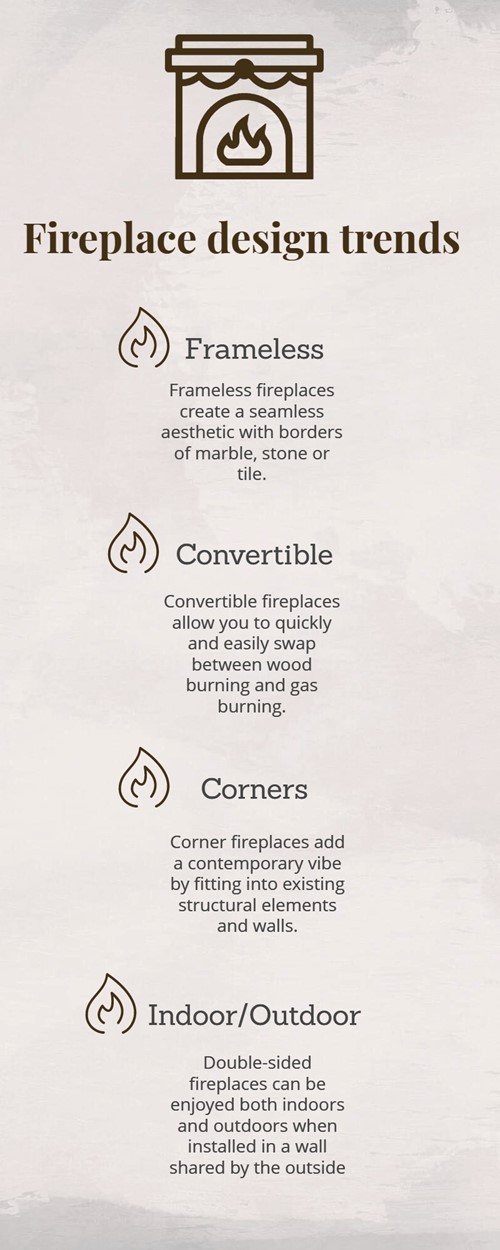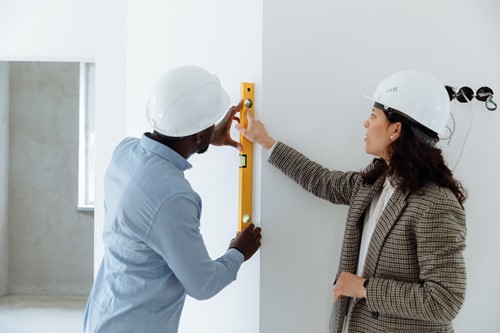Painting: How to Choose the Perfect Paint Color


You have a lot of freedom in painting the rooms inside your home, but that doesn’t make it easy to pick a color. Whether you are the type of person who lives peacefully among neutral tones or you have a vibrant personality that requires bold colors, you will want to use these tips to help you choose the right paint color for each room in your house.
Decide on a Color Scheme for Your Room
Before you try to choose the color for the walls of the room, you will want to narrow down your color scheme. You can do this by identifying three or four colors that you want to use throughout the room. You can use art work, throw pillows or existing furniture for color scheme inspirations. Once you have decided on the color scheme, you can narrow down which color you want to consider for the walls.
Evaluate What Will Stay and What Will Go
If you are renovating the entire room, narrow down what will stay in the room and what you are going to donate, sell or give to family members and friends. When you know what is going to be kept in the room, it will be easier to decide which paint color will work best.
Consider How the Colors Will Change the Atmosphere Within the Room
Remember that the colors on the wall can affect your perception of the size of the room and could even change how you feel when you are inside it. Light pastel colors create an open and peaceful atmosphere. Deep colors may create an intimate or dramatic mood. Bright and bold colors may make you feel happy, fun-filled and inspired.
Don’t Forget About the Spaces Surrounding the Room
If you are painting a room that connects to other rooms or that is part of an open concept design, consider the spaces that surround it before you make your final color selection. You will want this room to flow into the next one without being too oppositional or distracting.
When you take the time you need to decide on the perfect paint color for your home, you are guaranteed to love the result. The paint color that you choose will have a significant impact on how you feel when you are inside room, so it’s important to give this decision the time and energy that it deserves.
Selling a house as-is: A real estate guide


If a home requires a significant number of repairs, the seller has the option of selling the house as is. This can help alleviate the stress and costs of major repairs while preparing a home for the market.
While this strategy isn’t right for every situation, understanding the process can be beneficial to your home sale.
What does it mean to sell “as-is?”
In real estate, selling a home as-is means you’re selling exactly in its current condition – problems and all. This type of sale means the seller will not repair or improve the home before selling it, and the buyer cannot request any repairs or upgrade concessions.
Pricing is important when selling “as-is”
Real estate agents can create a comparative market analysis (CMA) to specifically target homes in similar conditions. This will help you find the optimal price for a home when selling as-is. You may also want to consider the costs of significant upgrades or repairs in your asking price.
What selling a house “as-is” is not
Unfortunately, many homeowners believe a sale in itself relieves them of any obligations associated with the normal sale process. However, you aren’t allowed to simply move out of the house without showing it or having a professional inspection report.
Specific rules for this vary by jurisdiction, so make sure you understand the specific requirements for your real estate transaction.
Talk to your real estate agent
It can be beneficial to work with a real estate agent with experience in selling a house as-is. They can help you get your listing in front of more prospective buyers and real estate investors likely to buy a property as-is.
Selling as-is can be an excellent strategy in a tough real estate market. However, it’s crucial to weigh the pros and cons before deciding to forego making major improvements or repairs to your home. Keep these factors in mind and consult a real estate professional to make the best possible decision for your home.
Trends: Fireplace designs that won’t quit

When interior designers or architects design fireplaces, they often go with the classic brick fireplace or a timeless marble fireplace, which often serves as the focal point for a living room or dining room. But homeowners may be looking for fresh fireplace ideas that step outside the traditional setup, or want to explore new ways to spruce up their current sitting area with real fire as design inspiration.
Regardless of your style, design choices or current decor, there is a fireplace style that can pull your rooms together. Here’s a brief guide to four of the most timeless fireplace design trends:
Frameless
Frameless fireplaces are great for those incorporating a bit of sophisticated ambience into their living room or large sitting area. These fireplaces frequently utilize marble, stone, tile or other hard, fire-resistant materials to build simple yet bold fireplaces.
They fit seamlessly against modern and contemporary decor ideas, and tend to come in black, white and neutral colors, though bold hues and painted tile may also be available from certain suppliers.
Frameless fireplaces also come in electric variations for those looking for heat with a bit of artwork tied in.
Convertible
Convertible fireplaces are excellent when it comes to versatility and year-round design prowess. These fireplaces allow you to create an inviting area while giving you the option to use a crackling wood log as fuel, or simply enjoy the warmth of a gas fireplace with less cleanup.
These fireplaces also come in handy if the firewood season has been particularly wet. For those looking to diminish their gas bill, switching to wood during great harvesting seasons can help you do just that.
Corners
Corner fireplaces come in different sizes and types. Often great for maintaining the contemporary vibe, these fireplaces come adorned with sleek lines, soft ambient glows and are a perfect fit for those with exposed beams or other structural elements within the home.
Like frameless fireplaces, these can come as traditional fireplaces or electric variations.
Indoor/Outdoor
Possibly one of the most interesting in fireplace design, indoor/outdoor fireplaces utilize a shared wall for indoor and outdoor spaces. They usually come in traditional finishes such as brick or marble. For those with a design edge, try employing a rustic mantel outdoors, while a soft and memory-laced mantel adorns the interior working of the indoor segment.

Fireplace designs are ever-changing as innovation plays with decor and design features. You may find that one of these four fireplaces is precisely what you’re searching for to pull your ideal room together.
Save space with these DIY storage ideas

Many homeowners turn to DIY storage ideas to get organized without breaking the bank. No matter what size of home you live in, storage space can seem hard to find – but this is especially true for smaller houses.
How can you squeeze storage space out of every single nook and cranny in your small home? Luckily, there are some great DIY storage ideas to help. Whether your goal is to get organized or make the most of your wall and floor space, here are some suggestions to start with:
Think vertically
Just because your home has limited floor space does not mean you’re out of storage options. By applying storage solutions vertically – such as against walls or cabinet doors – you can save space and organize an astounding range of different household items.
Wherever you have empty wall space, install floating shelves. Add storage to the inside of your pantry door or a cabinet door by attaching wire baskets to hold spices and small ingredients.
Another simple storage idea is to add hooks to the sides of counters, tables, cabinets, and in corners to hang kitchen utensils and anything else you want to store vertically.
Organize your cords
Proper cable management can work wonders for making your office or media center feel bigger. When working in a small space, it’s essential to keep cords and cables organized and out of the way.
One simple way to accomplish this is by attaching hooks to the underside of your desk or the shelves on your entertainment center. Use invisible adhesive hooks on the walls to grip cables and keep them off the floor to prevent hazards and make even a cramped space seem larger.
While these are only two examples of DIY storage ideas to save space in small homes, they can be an excellent place to begin.
Experiment with different storage methods in every room to gain better control of office supplies, craft supplies, kitchen tools and more – all while using the space you already have to the fullest potential.
Home insurance inspection: What to expect


To obtain or keep a homeowners insurance policy, your home may need to have a home insurance inspection. Insurance companies use inspections to identify any liability issues with your property and determine the amount of risk associated with its condition or features.
If you take some time to prepare, you might be able to identify some of these issues and fix them before the inspection happens. This can result in a better report, but also help you avoid any unpleasant surprises. Here are some things you can do to prepare for a home insurance inspection:
Examine exterior features
There are several outside portions of your home you can check before an inspection. Some possible issues include:
- Loose or missing roof shingles.
- Cracks in the chimney.
- Unsecured or clogged gutters.
- Hanging tree limbs over the roof or other home structures.
- Uneven driveway or walkway pavement.
Inspect your home’s interior
Examine the interior of your home to find and resolve any problems before they’re discovered during the inspection. Some things to make a note of include:
- Dead batteries in carbon monoxide and smoke detectors.
- Pest or water damage in the attic, basement or crawl space.
- Leaky plumbing fixtures.
- Loose electrical outlets.
What happens if you fail a home insurance inspection?
Even with preparation, the results of your inspection may not be ideal. If the insurance company finds major issues with your home interior or exterior, they might give you a deadline to resolve them to keep your coverage. If your home is too risky, you may be denied coverage entirely.
Regardless of inspection reports, the more you know about the condition of your home, the better. Remember to check for these issues periodically to ensure your home remains in the best possible condition, regardless of your insurance coverage.


 Facebook
Facebook
 X
X
 Pinterest
Pinterest
 Copy Link
Copy Link



